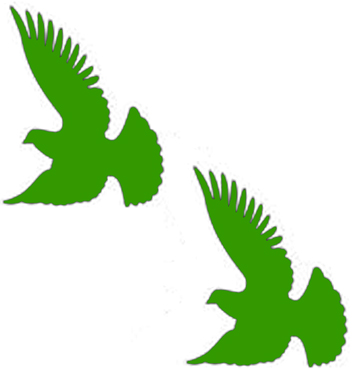Q: I am currently preparing to pair up my breeders for next years young birds. I have some lights on them to help as the days are short Nov 25. I will have the lights going about enough to make 14 hour days. My question is when do I quit using the lights. I got to thinking and I don’t want to have my old birds moulting during the race season nor do I want to delay young bird moulting to mess up their season.
I assume your question deals with lighting up the entire loft. What is wrong with lighting up only the section that you want to deal with -- such as, only the breeders or only the flyers or only the young birds. An easy way to accomplish this is to put the entire loft on a timer, but then have a light switch for each section that you can turn on and only have that part lit. In that way you can control which section you want lit using one master timer instead of individual timers for each section.
But let's assume you are lighting up the entire loft, not just select sections. Following is what will happen to your 3 different categories of birds.
If you want to breed in the winter, your breeders need to be on 14 1/2 hours of light and remain on 14 1/2 hours of light until you are finished breeding. This light stimulates the hormone system and starts the laying process. It would be best if you had the lights come on in the morning and let it get dark naturally. In that way, you do not have birds getting caught off the nest when the lights shut off in the evening. Of course this could be corrected by using more sophisticated lights with a dimmer switch. This type is used in Germany.
As to your old bird team on 14 1/2 hours of light, their moult will not start until they lay their second set of eggs and incubate them past 5 days. If you choose, you could raise youngsters from your flyers in the winter, but you must separate the hens and one youngster away from the cock birds before they lay again. You accomplish this by moving the hens with the extra youngsters into the young bird loft. You give them nest bowls and straw in a corner of the loft and the hens will feed them. Take my word for it, they really will.
The other way, of course, would be to let the cocks and hens both feed the youngsters in the old bird loft, but you would have to separate the hens and the cocks and rotate them in and out of the loft pretty much like you would flying birds on double widowhood. The hens would be with the youngsters at night time and the cocks in the daytime. But this takes time and somebody being at home to do the physical moving of the birds.
As to young birds being exposed to 14 1/2 hours of light, it will help them go through a complete moult. In other words, they would be on the light system where you speed up their body as well as their wing moult and you would probably have them ready to race with all new feathers, looking like yearlings.
